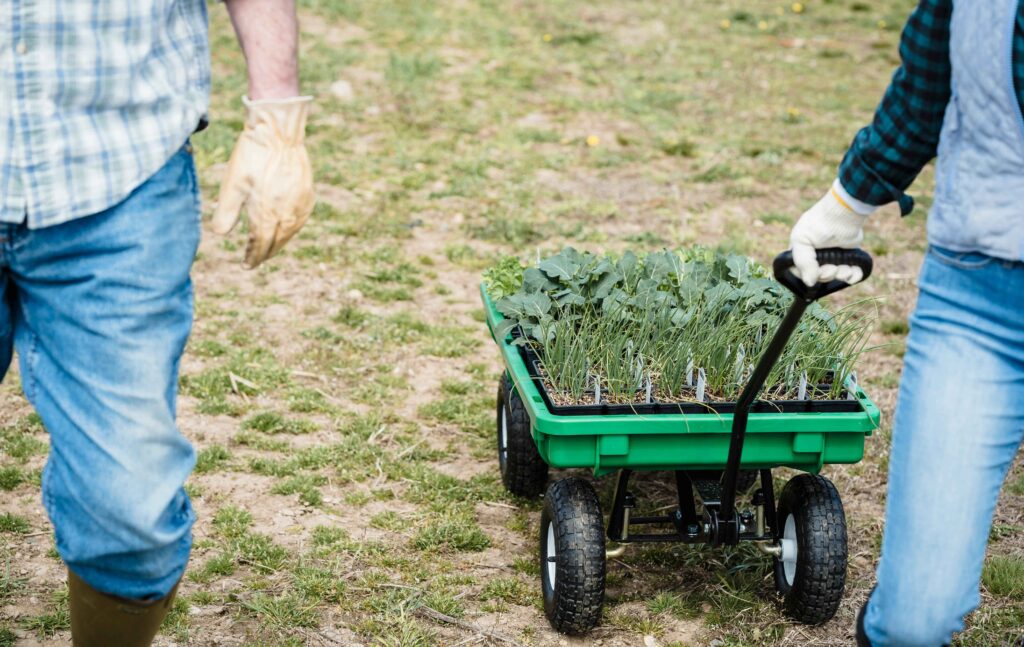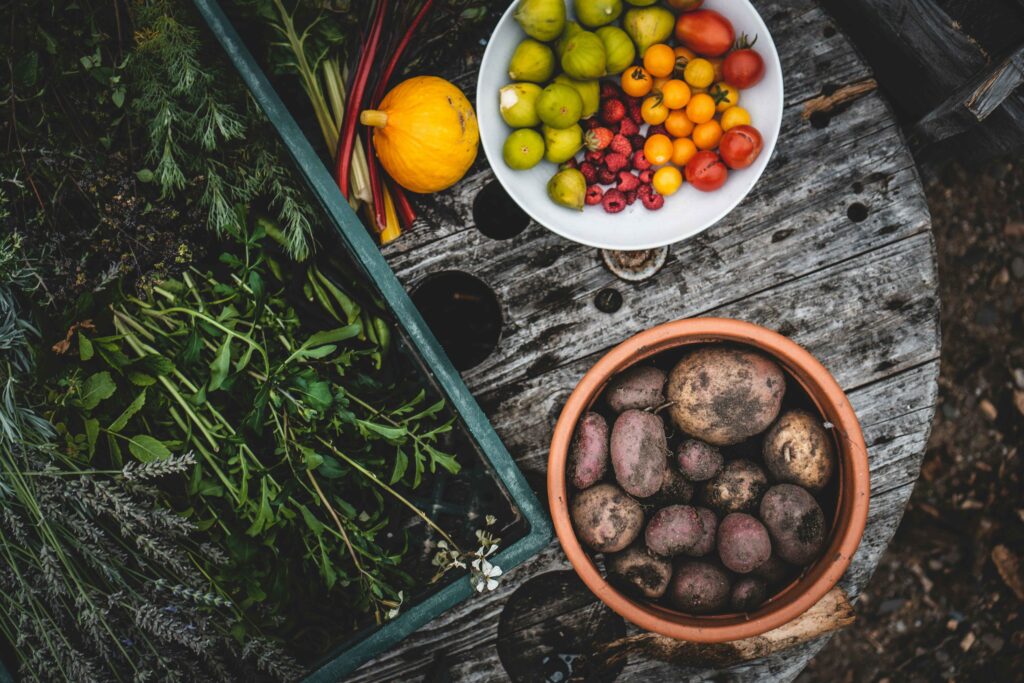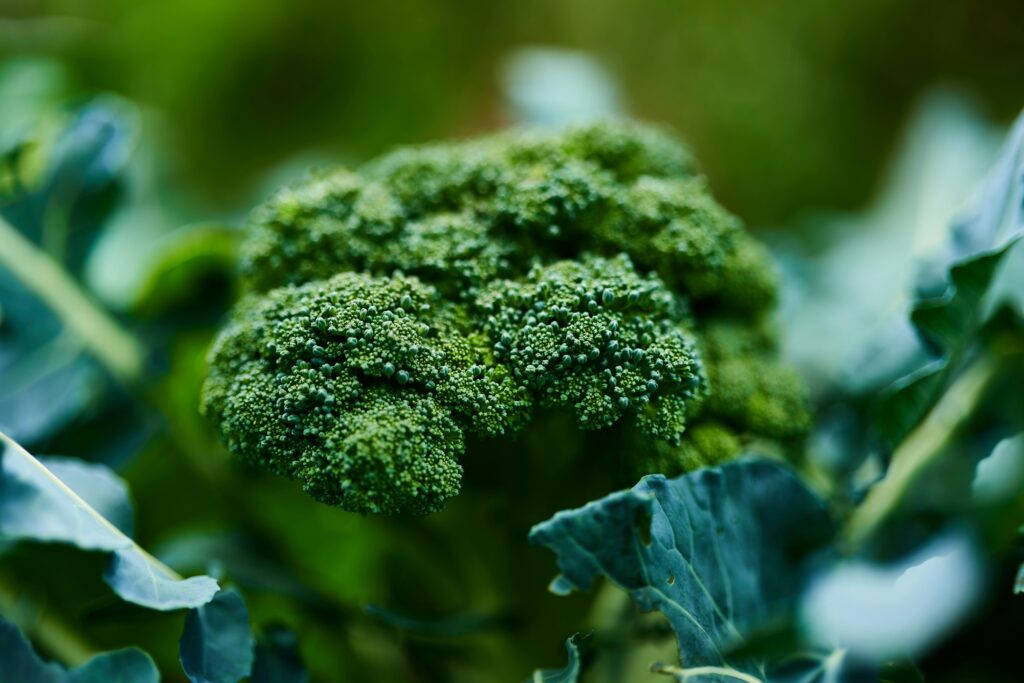Spring planting success in Australia hinges on understanding your local climate patterns and frost dates. Unlike many international gardening guides, Australian spring conditions vary dramatically across the continent – from the cool, wet springs of Tasmania to the warm, humid conditions of Queensland’s coast.
Getting your timing right means the difference between thriving crops and disappointing harvests. Plant too early in temperate zones, and late frosts can destroy tender seedlings. Plant too late in tropical regions, and the approaching wet season may overwhelm your crops with humidity and pests.
Understanding your specific climate zone allows you to select crops that naturally thrive in your local conditions, reducing the need for excessive watering, pest control, and crop protection. This targeted approach not only saves time and resources but also leads to healthier, more productive harvests throughout the growing season.

Australian Climate Zones Explained
Australia’s diverse climate zones each present unique opportunities and challenges for spring planting. Understanding these zones helps you choose crops that align with your local weather patterns, rainfall, and temperature ranges.
Temperate zones encompass much of southeastern Australia, including Victoria, Tasmania, southern New South Wales, the Adelaide Hills, and parts of Western Australia’s southwest. These areas experience distinct seasons with cool to cold winters and warm summers.
Mediterranean zones cover southwestern Western Australia and parts of South Australia, characterised by wet winters and dry summers with mild temperatures year-round.
Subtropical zones stretch along the eastern coast from northern New South Wales through southeastern Queensland, featuring warm, humid summers and mild winters with summer rainfall patterns.
Tropical and monsoonal zones dominate northern Queensland and parts of the Northern Territory, experiencing distinct wet and dry seasons with consistently warm temperatures.
Quick Climate Cues for Backyard Growers
Identifying your climate zone becomes straightforward when you observe local patterns. In temperate areas, you’ll notice deciduous trees losing leaves in autumn and potential frost through winter months. Mediterranean zones rarely experience frost, with most rainfall occurring between May and September.
Subtropical regions maintain green lawns year-round, with summer storm activity and mild winter temperatures rarely dropping below 10°C. Tropical zones experience minimal temperature variation, with the main seasonal difference being rainfall patterns rather than temperature changes.
Local nurseries stock plants suited to your climate zone, and observing what thrives in established neighbourhood gardens provides valuable insight into suitable crop choices for your area.
Best Spring Crops for Temperate Australia
Temperate Australia’s spring planting season typically begins in September, with the timing of specific crops dependent on your last expected frost date. Focus on cold-hardy vegetables early in the season, transitioning to warm-season crops as temperatures stabilise.
Top Vegetables, Herbs, and Cover Crops
Early Spring Plantings (September) Cool-season vegetables form the backbone of early temperate spring plantings. Broad beans, peas, and snow peas can handle light frosts and actually prefer cooler growing conditions. Plant these directly into prepared beds for best results.
Root vegetables including carrots, parsnips, and beetroot establish well in cooler soil temperatures. These crops benefit from direct sowing, as transplanting can cause root disturbance and forking.
Leafy greens such as lettuce, spinach, rocket, and Asian greens thrive in spring’s moderate temperatures. Succession plant these quick-growing crops every two weeks for continuous harvests.
Mid to Late Spring (October-November) As soil temperatures rise and frost risk diminishes, introduce warm-season crops like tomatoes, capsicums, and eggplants. Start these from seedlings rather than direct sowing, as they require consistent warmth for germination.
Herbs including basil, oregano, and parsley establish quickly in warming spring conditions. Plant Mediterranean herbs like rosemary and thyme in well-draining positions where they’ll thrive through summer.
Cucurbits such as zucchini, cucumbers, and pumpkins need warm soil and no frost risk. Wait until November in most temperate areas, or use protective covers for earlier plantings.
Cover Crops and Green Manures Spring offers excellent opportunities to improve soil health through strategic cover cropping. Crimson clover fixes nitrogen whilst providing attractive flowers for beneficial insects. Phacelia grows quickly and produces abundant blooms that support pollinators.
Buckwheat serves as a fast-growing option for areas between main crops, accumulating phosphorus and breaking up compacted soil with its extensive root system.
Best Spring Crops for Mediterranean Zones
Mediterranean Australia enjoys mild winter conditions that allow year-round growing, making spring an extension of productive growing rather than a fresh start after dormancy. Focus on crops that appreciate the moderate temperatures before summer’s heat arrives.
September to October Plantings Take advantage of mild conditions by establishing warm-season crops earlier than other climate zones. Tomatoes, capsicums, and eggplants can be planted from September onwards, giving them extended growing seasons before summer heat stress.
Mediterranean herbs naturally thrive in these conditions. Establish oregano, thyme, sage, and rosemary during spring for robust plants that will withstand summer drought conditions with minimal irrigation.
Cool-season crops including lettuce, spinach, and Asian greens appreciate spring’s moderate temperatures. These crops may struggle once summer heat arrives, so prioritise spring harvests.
October to November Focus Utilise the extended growing season by establishing perennial crops. Asparagus crowns planted in spring will establish strong root systems over their first season, providing harvests for many years.
Mediterranean zones suit stone fruits and citrus particularly well. Spring planting allows trees to establish before their first summer, though adequate irrigation systems are essential.
Herb gardens reach their peak during spring and early summer. Plant annual herbs like basil and coriander in succession for continuous harvests, whilst establishing perennial herbs in permanent positions.
Best Spring Crops for Subtropical Regions
Subtropical Australia’s warm springs provide excellent growing conditions, though summer’s approaching heat and humidity influence crop selection. Focus on establishing crops that either harvest before intense summer conditions or thrive in heat and humidity.
August to September Start Subtropical springs begin earlier than temperate regions, with August often suitable for planting. Cool-season crops including lettuce, spinach, and Asian greens should be established early to harvest before summer heat.
Root vegetables such as carrots, radishes, and turnips grow well in subtropical springs. These crops prefer the moderate temperatures and can be succession planted for extended harvests.
September to October Peak Warm-season crops excel in subtropical conditions. Tomatoes, capsicums, chillies, and eggplants thrive in the warm, humid environment. Choose varieties suited to humidity and potential disease pressure.
Leafy tropical crops including kangkung, Ceylon spinach, and Malabar spinach handle heat and humidity better than traditional leafy greens. These alternatives provide nutritious harvests through challenging summer conditions.
Herbs adapt well to subtropical conditions, though selection matters. Heat-tolerant varieties of basil, including African blue basil and holy basil, outperform sweet basil in humid conditions.
Late Spring Considerations As temperatures rise, focus on heat-loving crops that establish before summer’s peak intensity. Sweet potatoes, okra, and yard-long beans thrive in warm, humid conditions.
Consider vertical growing systems to maximise space and improve air circulation around plants, reducing fungal disease pressure common in humid subtropical summers.
Best Spring Crops for Tropical and Monsoonal Zones
Tropical Australia’s spring coincides with the dry season, providing ideal growing conditions before the wet season’s arrival. This timing window requires strategic planning to establish crops that either harvest before wet season intensity or continue producing through challenging conditions.
Dry Season Advantage (August to October) The dry season’s reliable sunshine and moderate humidity create excellent growing conditions for most crops. Establish warm-season vegetables including tomatoes, capsicums, and eggplants early in the dry season for productive harvests.
Root crops such as sweet potatoes, cassava, and yacon establish well during dry season conditions. These crops develop extensive root systems that help them weather wet season challenges.
Heat-Tolerant Selections Choose crop varieties specifically adapted to tropical conditions. Cherry tomatoes often outperform large-fruited varieties, whilst determinate varieties complete their lifecycle before wet season intensity.
Tropical leafy greens including kangkung, sweet potato leaves, and amaranth provide reliable harvests in hot, humid conditions where traditional leafy greens struggle.
Pre-Wet Season Strategy Time plantings to either complete their lifecycle before wet season arrival or establish robust plants capable of weathering increased rainfall and humidity. Quick-growing crops like radishes, Asian greens, and herbs can provide harvests within 6-8 weeks of planting.
Perennial crops including passionfruit, dragon fruit, and tropical herbs establish during the dry season, developing strong root systems before facing wet season challenges.
Quick Planting Calendar by Zone
| Crop Category | Temperate | Mediterranean | Subtropical | Tropical |
| Cool Season Veg | Sept-Oct | Aug-Sept | Aug-Sept | Aug-Sept |
| Warm Season Veg | Oct-Nov | Sept-Oct | Sept-Oct | Aug-Sept |
| Herbs | Sept-Nov | Aug-Nov | Aug-Oct | Aug-Sept |
| Root Crops | Sept-Oct | Aug-Oct | Aug-Sept | Aug-Sept |
| Leafy Greens | Sept-Nov | Aug-Oct | Aug-Sept | Aug-Sept |
| Legumes | Sept-Oct | Aug-Sept | Aug-Sept | Aug-Sept |
Key Timing Notes:
- Temperate zones: Wait for last frost before warm-season crops
- Mediterranean zones: Extended planting window due to mild conditions
- Subtropical zones: Plant cool-season crops early before summer heat
- Tropical zones: Maximise dry season growing window
Crop Pairing and Succession Sowing for Spring
Strategic companion planting and succession sowing maximise productivity and garden health throughout spring and into summer. Understanding which crops support each other creates more resilient growing systems whilst providing continuous harvests.
Classic Spring Combinations
The traditional “Three Sisters” planting of corn, beans, and squash adapts well to Australian spring conditions. Plant corn first, allowing it to establish before adding climbing beans that fix nitrogen for heavy-feeding corn and squash.
Tomatoes benefit from basil companions, which may help repel certain pests whilst improving flavour. Plant marigolds nearby to attract beneficial insects and add vibrant colour to productive spaces.
Succession Sowing Strategy
Quick-growing crops including lettuce, radishes, and Asian greens should be replanted every 2-3 weeks for continuous harvests. This approach prevents glut periods whilst ensuring fresh produce throughout the growing season.
Stagger warm-season plantings by 2-4 weeks to extend harvest periods. Plant tomatoes, capsicums, and eggplants in successive batches rather than all at once for prolonged productivity.
Vertical Space Utilisation
Combine climbing crops with ground-level plantings to maximise space efficiency. Peas and beans grown up trellises provide vertical interest whilst leaving ground space for lettuce, spinach, or herbs underneath.
Use tall crops like corn or sunflowers as natural supports for climbing beans or peas, creating productive polyculture systems that make efficient use of garden space.
Fast Wins: 6 Quick Harvest Crops for Early Spring
Impatient gardeners and those seeking quick confidence boosts benefit from fast-growing crops that provide harvests within weeks of planting. These selections offer rapid satisfaction whilst longer-season crops establish.
Radishes (25-30 days) Radishes germinate quickly and mature rapidly, making them ideal for impatient growers. Choose varieties suited to your climate zone, with cherry belle and white icicle performing well across most Australian conditions.
Direct sow in prepared beds with good drainage, as radishes prefer consistent moisture without waterlogging. Succession plant every two weeks for continuous harvests.
Rocket (30-40 days) This peppery green grows vigorously in cool spring conditions, providing cut-and-come-again harvests. Rocket self-seeds readily, often providing ongoing crops with minimal effort.
Harvest outer leaves whilst allowing centres to continue growing, extending the productive period of each planting.
Asian Greens (35-45 days) Pak choy, tatsoi, and mizuna grow quickly in spring conditions, offering diverse flavours and textures. These crops handle light frosts whilst providing nutritious harvests.
Plant in blocks rather than rows for efficient space use and easier harvesting of individual leaves or whole plants.
Lettuce (40-50 days) Choose loose-leaf varieties for quickest results, harvesting outer leaves whilst centres continue growing. Heat-tolerant varieties extend the growing season in warmer zones.
Provide some shade in warmer areas to prevent bolting and maintain leaf quality.
Spinach (40-50 days) This nutritious leafy green thrives in cool spring conditions, providing iron-rich harvests for salads and cooking. Choose varieties suited to your specific climate zone.
Harvest regularly to encourage continued production and prevent plants from bolting to seed.
Herbs (varies) Fast-growing herbs including coriander, dill, and chives provide immediate garden satisfaction. Many herbs offer both culinary and beneficial insect-attracting properties.
Plant herbs near frequently used areas for convenient harvesting and to take advantage of their pest-deterrent properties.
Common Mistakes and Region-Specific Tips
Successful spring planting requires avoiding common pitfalls whilst adapting general advice to local conditions. Understanding regional challenges helps prevent disappointment and maximises garden productivity.
Timing Errors
The most common mistake involves planting warm-season crops too early in temperate zones. Late frosts can destroy tender seedlings, setting back garden plans by weeks. Monitor local weather forecasts and be prepared with protective covers for unexpectedly cold nights.
Conversely, waiting too long to plant in tropical zones wastes valuable dry season growing time. Establish crops during optimal conditions rather than delaying until perfect timing.
Soil Preparation Oversights
Spring enthusiasm often leads to planting in unprepared soil. Cold, wet, or compacted soil prevents proper root development and can lead to poor plant establishment.
Ensure drainage in areas prone to waterlogging, particularly important in subtropical and tropical zones approaching wet seasons. Raised beds or improved drainage systems prevent root rot and other moisture-related problems.
Variety Selection Issues
Choosing varieties unsuited to local conditions leads to poor performance despite proper care. Cool-season varieties of lettuce struggle in warm subtropical springs, whilst heat-loving varieties may not develop properly in cool temperate conditions.
Research varieties specifically bred for or proven successful in your climate zone. Local nurseries and gardening groups provide valuable variety recommendations.
Regional Adaptation Tips
Temperate Zones: Use protective covers for early plantings, choose varieties with extended harvest periods, and focus on succession planting for continuous harvests.
Mediterranean Zones: Take advantage of mild conditions for extended growing seasons, establish drought-tolerant crops before summer heat, and implement water-efficient irrigation systems.
Subtropical Zones: Plant cool-season crops early, choose disease-resistant varieties for humid conditions, and ensure good air circulation around plants.
Tropical Zones: Maximise dry season growing, select heat and humidity-tolerant varieties, and plan for wet season challenges.
Conclusion
Successful spring planting across Australia’s diverse climate zones requires understanding local conditions, choosing appropriate crops, and timing plantings correctly. Whether you’re gardening in temperate Victoria, Mediterranean Western Australia, subtropical Queensland, or tropical Northern Australia, selecting regionally appropriate crops sets the foundation for productive harvests.
Start with quick-growing crops for immediate satisfaction whilst establishing longer-season vegetables that will provide harvests through summer and beyond. Focus on soil preparation, proper timing, and variety selection suited to your specific conditions.
Your spring planting journey continues with ongoing care, pest management, and succession planting for continuous harvests. Consider companion planting strategies, water-efficient irrigation systems, and season extension techniques to maximise your garden’s productivity.
For detailed monthly planting schedules specific to your area, explore our comprehensive monthly planting calendar. Learn about beneficial plant combinations through our companion planting guide, and discover specific growing advice for your region in our detailed location spotlights covering areas from Daylesford to Mudgee to the Atherton Tablelands.
Building healthy, productive soil forms the foundation of successful gardening. Our soil improvement plan provides step-by-step guidance for creating the ideal growing medium for your chosen crops, ensuring strong plant establishment and robust harvests season after season.
Frequently Asked Questions
Spring planting time varies significantly across Australia’s climate zones. Temperate areas typically begin in September after the last frost, Mediterranean zones can start as early as August, subtropical regions benefit from August-September plantings, and tropical zones should maximise the August-October dry season window.
Avoid planting tomatoes outdoors in early spring in temperate zones, as they’re extremely frost-sensitive. Wait until October-November when soil temperatures have warmed and frost risk has passed. Use protected growing or start seeds indoors if you want earlier harvests.
Beginners should focus on fast-growing, low-maintenance crops including radishes, lettuce, Asian greens, herbs like basil and coriander, and legumes such as peas and broad beans. These crops provide quick results, tolerate minor care mistakes, and build confidence for more challenging plantings.


